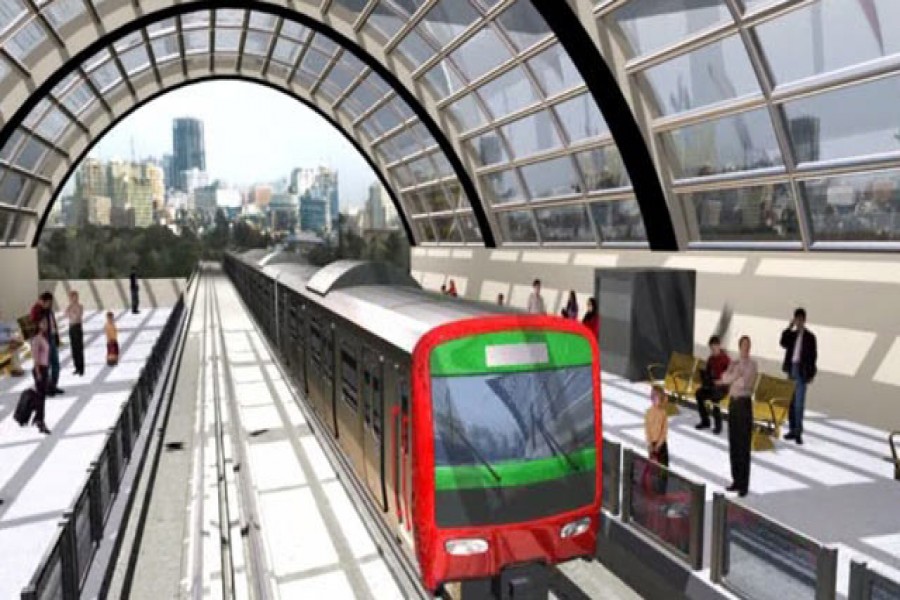The digging work for the 20-kilometre metro rail track construction in the capital is in progress. It goes on despite seasonal rains that normally disrupt movement of commuters and pedestrians. Amid the challenges of keeping the massive project under grip and the three-fold rise in the cost of utility line shifting along the track, the construction work of the eagerly awaited metro line began on August 02. The Road Transport and Bridges Minister inaugurated the work, known as Mass Rapid Transit (MRT) Line-6 at Agargaon in Dhaka. Work on the overhead metro rail, covering the construction of its first segment comprising the 12km Uttara-Agargaon elevated rail track and nine stations, does, as they said, obviously calls for a highly methodical and trouble-free execution of the job. The authorities have set the target of 2019 for completing the Uttara-Agargaon project. It connects Uttara North with Agargaon cutting across Pallabi, Mirpur, Kazipara and Shewrapara areas. The second phase of the MRT Line-6, stretching up to Motijheel, will cover Farmgate, Shahbagh, Doel Chattar and Topkhana Road areas on the total 20-kilometre route. The second phase is set to be completed by 2020. Prime Minister Sheikh Hasina opened the metro rail project's construction work on June 24 in 2016.
With a chaotic situation prevailing on the roads of Dhaka, both the deadlines warrant, and reasonably at that, a vigorous and hectic work schedule. To the authorities implementing the gigantic project in an unplanned and logjam-plagued city, it might appear a tall order, as well as a race against time. Their day-to-life gone haywire due to punishing traffic gridlocks, the residents of Dhaka still eagerly look to the elevated metro rail in place by the deadlines set. Keeping this prospect at the hands of future, pragmatism prompts many to take stock of the present situation.
A number of ground realities have lately cropped up. The damper of three-fold cost escalation in the task of shifting some vital utility lines comes to the fore. This has been ascribed to lack of coordination among the agencies concerned and a deviation from the original work plan. The budget for the utility lines' relocation has been revised upward to Tk 7.71 billion from the original expenditure of Tk 2.01 billion. Moreover, the Agargaon project office of the MRT Line-6 has yet to get the land earmarked for a construction yard and the sites to erect piers and set up stations on the metro route. In fact, the start of the track's main construction work now appears to be heavily hinged on the prompt completion of the utility lines' relocation. Timely execution of the utility lines' shifting poses a great challenge to the whole project. In the perspective of the whole project, the relocation of the utility lines emerges as one of the critical tasks. Without completing it, the setting up of stations and piers is set to be stuck in uncertainties. As part of a domino effect, it may cause delays to the project's implementation.
All grand ventures have their teething problems. Coming to the elevated metro rail, these could be cut down considerably. To this end, a major task appears to be an effective traffic rerouting plan during the project's execution. At the same time the commuters in this perennially gridlocked city need to be prepared to go through a period of inconveniences caused by many types of dislocation. Finally, it is them who'll benefit from the overhead metro travel.


